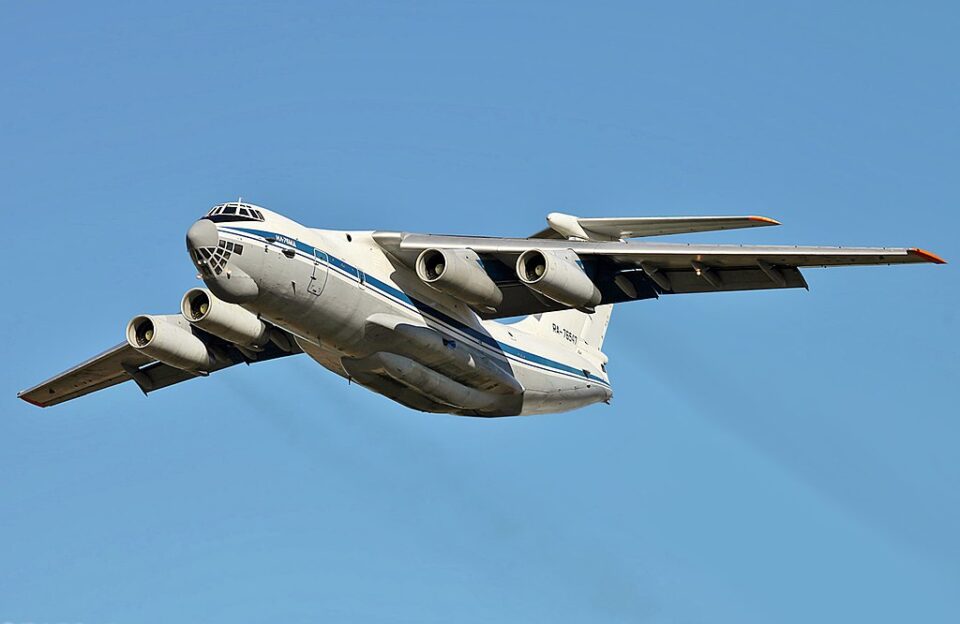Aviation
Russia’s Next-Gen Il-76 Commercial Variant Ready for 2028 Debut

Russian aerospace giant United Aircraft is setting the stage for the next evolution of its renowned Ilyushin Il-76 aircraft, with plans to develop a modernized commercial variant known as the Il-76TD-90A.
This new model is a significant upgrade of the Il-76TD, which has been a workhorse in the commercial transport sector. According to FlightGlobal, the upgraded variant is set to enter production before the end of the decade, with deliveries scheduled to begin in 2028.
The Il-76TD-90A will be based on the military-focused Il-76MD-90A, which is already in production. This modernization comes at a crucial time, as over 100 Il-76TDs currently in operation are nearing the end of their service lives. These aircraft, originally manufactured in Tashkent, have served reliably for decades, and the new variant aims to continue this legacy with enhanced capabilities.
Russia Launches New Yak-130M Combat Training Aircraft
United Aircraft’s managing director, Daniil Brenerman, expressed confidence that the upgraded Il-76TD-90A will attract significant interest from commercial carriers, particularly those needing a reliable and versatile cargo transport solution.
The aircraft’s development is underscored by the recent certification from Russia’s Federal Air Transport Agency, Rosaviatsia, which issued a type certificate to Ilyushin covering the Il-76 modifications. This certification outlines the flight performance characteristics and operational limitations of the new variant, paving the way for its eventual deployment.
Beyond its traditional role, russia commercial aircraft the Il-76 has also been adapted for several unique and unexpected uses. One such adaptation is its role in firefighting. The Il-76TD and Il-76TD-90VD variants have been modified with a water-dispensing system and tanks capable of holding up to 42 tonnes of water or fire retardant. This upgrade has transformed the Il-76 into an effective tool for combating wildfires, particularly in hard-to-reach areas.
Aviation Sanctions? No problem! These Russian 7 airplane will repalce western aircraft
Additionally, the Il-76 platform has been used for airborne early warning and control missions. The A-50 Mainstay, derived from the Il-76, is equipped with an extensive radar system mounted atop a rotating disc above the fuselage. This radar system provides long-range surveillance and command and control capabilities, making it invaluable for strategic defense and reconnaissance missions.

Aviation
Airbus Enhances A350 Cabin with 10-Abreast Seating

Airbus has announced a new partnership with Jiatai Aircraft Equipment, a Chinese aircraft seating manufacturer, to supply upgraded economy-class seats for the A350 widebody series.
This collaboration, unveiled at the 2024 Airshow China, focuses on developing a newly designed economy seat tailored for the A350‘s New Production Standard (NPS) cabin.
One of the key features of the NPS cabin is the ability to accommodate 17-inch wide economy seats, compared to the previous 16.5-inch wide seats that airlines were limited to in the A350’s earlier configurations.
British Airways Unveils Its Brand-New First Class Cabin for the Airbus A380
This change is made possible by the expanded space in the NPS cabin, which is 35 inches longer and 4 inches wider than the previous version. This extra space is achieved by slightly moving the cockpit wall forward and shifting the rear pressure bulkhead back by one frame.
The wider cabin allows airlines to add up to 30 extra economy seats without compromising comfort. For airlines opting for a 3-4-3 seating layout, the 17-inch wide seats are an excellent choice for a more comfortable passenger experience. However, some airlines, such as Iberia, may choose to retain a 9-abreast layout with wider seats for added comfort.
The NPS cabin also offers enhanced flexibility for airline operators. One major advantage is the ability to easily switch between a 9-abreast and 10-abreast seating configuration without requiring significant downtime for aircraft reconfiguration. Airlines can use the same seat rails, tracks, and IFE interfaces, making the transition smoother and quicker.
Etihad Airways Unveils 10 Exciting New Routes for 2025
In addition, the design of the floor attachments and air-conditioning systems has been optimized for 10-abreast seating, meaning airlines can upgrade their cabins without needing to make substantial modifications to the aircraft’s structure.
Though it’s still unclear when Jiatai’s economy-class seats will be officially added to the A350’s Buyer Furnished Equipment (BFE) catalogue, the collaboration marks a significant step toward enhancing the A350’s cabin offerings.
With this partnership, Airbus is providing more seating options for airlines, ensuring that they can meet diverse customer needs while improving overall operational efficiency.
-

 Aviation2 months ago
Aviation2 months agoMicrosoft Flight Simulator Raises $3 Million to Bring Back the An-225 Mriya
-

 Airlines2 months ago
Airlines2 months agoQatar Citizens Can Travel to the United States Without a Visa
-

 Aviation2 months ago
Aviation2 months agoQatar Airways bans these new Electronic Devices on plane
-

 Airlines2 months ago
Airlines2 months agoJapan Airlines Rolls Out Free Domestic Flights to International Passengers
-

 Defence2 months ago
Defence2 months agoWhich Country Has the Largest Fleet of Fighter Aircraft?
-

 Airport2 months ago
Airport2 months agoWestern Sydney Airport Welcomes Its First Plane After 6 Years of construction
-

 Airlines4 days ago
Airlines4 days agoDAMAC Air: Dubai’s New Luxury Airline Offers Free Flights for Registration
-

 Aviation2 months ago
Aviation2 months agoDid you know ? Once Boeing 747 carried 1088 passenger in 1991








